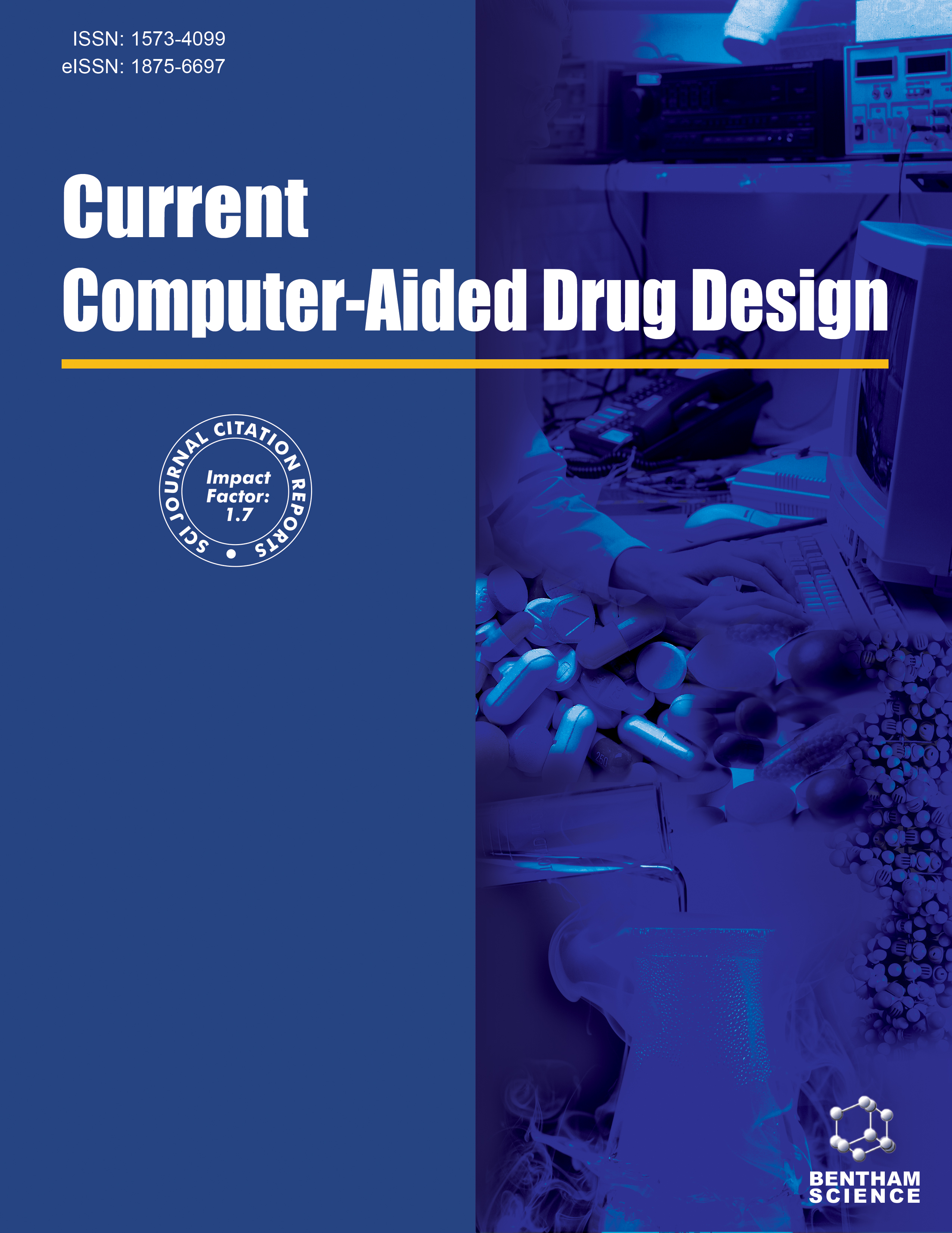- Home
- A-Z Publications
- Current Computer - Aided Drug Design
- Previous Issues
- Volume 16, Issue 1, 2020
Current Computer - Aided Drug Design - Volume 16, Issue 1, 2020
Volume 16, Issue 1, 2020
-
-
QSPR Models to Predict Thermodynamic Properties of Cycloalkanes Using Molecular Descriptors and GA-MLR Method
More LessAuthors: Daryoush Joudaki and Fatemeh ShafieiAims and Objectives: QSPR models establish relationships between different types of structural information to their observed properties. In the present study the relationship between the molecular descriptors and quantum properties of cycloalkanes is represented. Materials and Methods: Genetic Algorithm (GA) and Multiple Linear Regressions (MLR) were successfully developed to predict quantum properties of cycloalkane Read More
-
-
-
Theoretical Studies on the Selectivity Mechanisms of Glycogen Synthase Kinase 3β (GSK3β) with Pyrazine ATP-competitive Inhibitors by 3D-QSAR, Molecular Docking, Molecular Dynamics Simulation and Free Energy Calculations
More LessAuthors: Jingyu Zhu, Yuanqing Wu, Lei Xu and Jian JinBackground: Glycogen synthase kinase-3 (GSK3) is associated with various key biological processes and has been considered as an important therapeutic target for the treatment of many diseases. Great efforts have been made on the development of GSK3 inhibitors, especially ATP-competitive GSK3β inhibitor, but it is still a great challenge to develop selective GSK3β inhibitors because of the high sequence homolog Read More
-
-
-
Effects of Hydroxyl Group on the Interaction of Carboxylated Flavonoid Derivatives with S. Cerevisiae α-Glucosidase
More LessAuthors: Huining Lu, Yanjiao Qi, Yaming Zhao and Nengzhi JinIntroduction: Carboxyalkyl flavonoids derivatives are considered as effective inhibitors in reducing post-prandial hyperglycaemia. Methods: Combined with Density Functional Theory (DFT) and the theory of Atoms in Molecules (AIM), molecular docking and charge density analysis are carried out to understand the molecular flexibility, charge density distribution and the electrostatic properties of these carboxyalkyl deri Read More
-
-
-
New Insights into the Binding Mechanism of Co-regulator BUD31 to AR AF2 Site: Structural Determination and Analysis of the Mutation Effect
More LessAuthors: Tianqing Song and Jiazhong LiIntroduction: Androgen Receptor (AR) plays a pivotal role in the development of male sex and contributes to prostate cancer growth. Different from other nuclear receptors that bind to the co-regulator LxxLL motif in coregulator peptide interaction, the AR Ligand Binding Domain (LBD) prefers to bind to the FxxLF motif. BUD31, a novel co-regulator with FxxLF motif, has been demonstrated to suppress wild-type and mutated AR-m Read More
-
-
-
De-novo Drug Design, Molecular Docking and In-Silico Molecular Prediction of AChEI Analogues through CADD Approaches as Anti-Alzheimer’s Agents
More LessAuthors: Surabhi Pandey and B.K. SinghBackground: There are over 44 million persons who suffer with Alzheimer’s disease (AD) worldwide, no existence of cure and only symptomatic treatments are available for it. The aim of this study is to evaluate the anti-Alzheimer potential of designed AChEI analogues using computer simulation docking studies. AChEIs are the most potential standards for treatment of AD, because they have proven efficacy. Among all Read More
-
-
-
Quality by Design Approach for Development and Characterisation of Solid Lipid Nanoparticles of Quetiapine Fumarate
More LessBackground: Quetiapine fumarate, a 2nd generation anti-psychotic drug has oral bioavailability of 9% because of hepatic first pass metabolism. Reports suggest that co-administration of drugs with lipids affects their absorption pathways, enhances lymphatic transport thus bypassing hepatic first-pass metabolism resulting in enhanced bioavailability. Objective: The present work aimed at developing, and characterising potentia Read More
-
Volumes & issues
-
Volume 21 (2025)
-
Volume 20 (2024)
-
Volume 19 (2023)
-
Volume 18 (2022)
-
Volume 17 (2021)
-
Volume 16 (2020)
-
Volume 15 (2019)
-
Volume 14 (2018)
-
Volume 13 (2017)
-
Volume 12 (2016)
-
Volume 11 (2015)
-
Volume 10 (2014)
-
Volume 9 (2013)
-
Volume 8 (2012)
-
Volume 7 (2011)
-
Volume 6 (2010)
-
Volume 5 (2009)
-
Volume 4 (2008)
-
Volume 3 (2007)
-
Volume 2 (2006)
-
Volume 1 (2005)
Most Read This Month
Article
content/journals/cad
Journal
10
5
false
en


